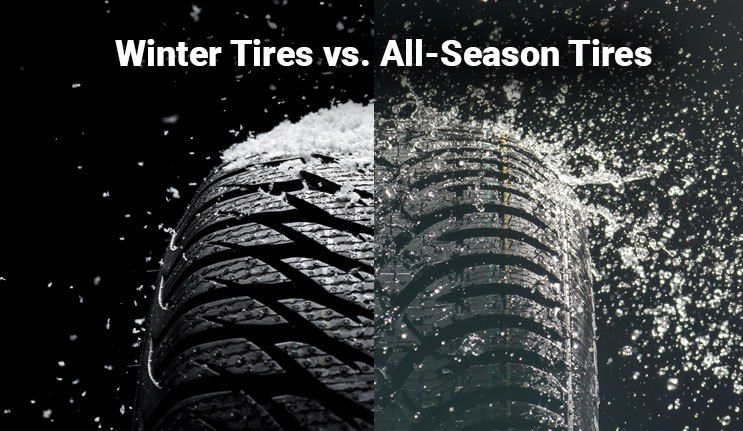No one wants to purchase new tires, only to find out that they’re already leaking air. Tire Pirates specializes in tire services in Calgary, AB. We want to help you understand how new tires can leak air and what can be done about this problem. The good news is that this problem is usually easy to fix. New tires can and do leak air, but there’s no need to panic. We’ll explain what can be done about it and how to determine what’s causing your new tires to leak air. Learn more and contact us today for commercial tire services in Calgary, AB.
Reasons New Tires Can Leak Air
Investing in new tires is a good idea for your vehicle, but finding out that they’re already leaking air can be quite frustrating. The truth is that your tires may not be defective, although it’s a slim possibility. There are other, more common, reasons why your new tires may be leaking air, including:
 Be sure to have your rim checked for corrosion, rust, cracks, or warping.
Be sure to have your rim checked for corrosion, rust, cracks, or warping.The easiest thing you can do is bring your vehicle to Tire Pirates. Our trained mechanics and technicians will inspect your tires and determine why they’re leaking air. If you got your tires from us and we installed them for you, we’ll remedy the problem, and you won’t have to worry about a thing. If you got them somewhere else, we’d still be happy to find out what’s wrong and make it right. Brand new tires are typically covered by a warranty. If your tire continues to lose air after being filled several times, just bring your car in for a repair or replacement.
Comprehensive Tire Repair ServicesYou can trust Tire Pirates for all the tire repair services you need. We’ve been serving the Calgary, AB community since 1991. We perform seasonal tire changes and provide flat tire repair services. Our team can repair rapid leaks, slow leaks, and bead leaks. We can determine whether you need new tires, or a repair will do the trick. Tire Pirates also offers seasonal tire storage options.
We can determine whether you need new tires, or a repair will do the trick. Tire Pirates also offers seasonal tire storage options.
When you need automotive maintenance for your car, truck, or SUV, bring it to one of our two convenient locations. We offer comprehensive mechanical services, including wheel alignments, brake replacement, steering and suspension, oil changes, wiper blade replacement, vehicle batteries, auto tune-ups, air filter replacement, and more. Tire Pirates offers a wide selection of commercial tires. We carry construction tires, quality and durable tracks, industrial tires, farm equipment tires, and more.
We Can Repair Your Leaking TiresIf you need top-notch tire service in the Calgary area, Tire Pirates can help. We offer auto mechanical services in Calgary, AB for all types of vehicles at our locations in Chinook and Foothills. We pride ourselves on providing quick, professional service. Contact us today to learn more or schedule an appointment.
Contact us today to learn more or schedule an appointment.
Tire pressure has a significant influence on vehicle performance, durability and fuel economy. However, most people face the problem of air leaks that reduce wheel pressure.
One of the issues that people are very concerned about is brand new tire losing air pressure. Normally, the degree of escape is related to tire life. With new tires, it is quite rare unless it is experiencing some external impact.
Let’s explore the following article to understand better the causes and how to fix the pressure drop in new tires.
Why Is Tire Pressure Important?Tire PressureTire pressure is understood as the pressure of air compressed inside the tire. This one dramatically affects the operating characteristics of the new tire.
More specifically, inflating the new tires at the correct pressure helps the wheelchair roll on the road with the full tread. The contact surface is spread evenly, thereby helping to wear the surface evenly.
The contact surface is spread evenly, thereby helping to wear the surface evenly.
Besides, a set of properly inflated new tires also brings direct benefits to the user, such as optimal smoothness, stable cornering ability, shortest braking distance, and fuel economy.
Pressure is significant to the use of your car because it directly affects the performance, durability, and optimal function of the brakes and suspension systems equipped on the vehicle.
At the same time, maintaining the correct pressure helps you maintain safety, vehicle load, wheel life, and fuel consumption.
Therefore, you need to check your new tires regularly to ensure the pressure is always at the most stable level.
Why Does Your Brand New Tire Lose Air Pressure And Leak Air?Next, to better understand the condition of new tires leaking air, let’s learn about some of the causes of this condition.
Loss of air pressureThe first cause is the loss of air pressure. Here are some of the reasons.
Here are some of the reasons.
Although very careful, when you just change a new tire, the risk of wheel failure can occur. The common problem is that your tire valve stem is of poor quality.
When changing a new tire, it is better to replace the valve with a new one. Also, don’t forget to check it regularly to determine if it’s working correctly. Besides, if the valve core is too tight, it can also cause air to leak.
Another problem is that damaged, warped, deformed wheels due to impact also cause pressure to drop.
Tire damageDamageIn addition to the wheels, problems related to tires include rolling a nail or sharp object that punctures the new tire damaged, broken, and reduces the pressure quickly.
When moving on the road, you need to pay attention to the terrain. You accidentally go into potholes at high speed; it can also cause new tires to leak air.
Temperature changeMoreover, the change in weather is also the reason why the pressure of newly purchased tires decreases.
When it’s cold, the air contracts, and the pressure level drops faster. So, you need to regularly check your wheel in the winter to maintain it at the right level.
Gas leakGas leaks can also be the cause of brand new tires losing tension. Leaking gas causes a drop in tire tension, and this can happen slowly or very quickly.
Assembly problemIf there is a problem during the assembly process that causes the rims and tires not to fit properly, it will also cause air to leak faster.
Valve is brokenValve is brokenSimilarly, if you buy a new car but use an old valve or a new valve that comes with a damaged tire, it will also cause air to escape.
Usually, this speed is relatively slow. Therefore, it will be difficult to detect now but check the valve regularly to limit this situation.
Temperature change – VariationThe temperature change will also cause the air in the wheel to escape.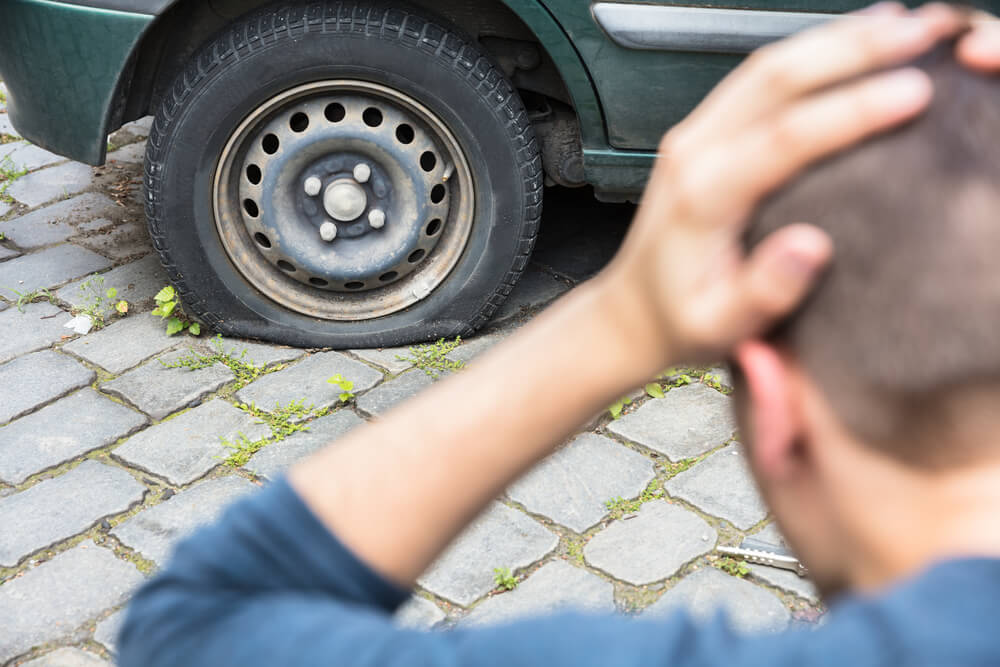 The molecules are often more concentrated when it is cold, shrinking, reducing tension. Statistically, every 10°F drop in temperature reduces stress by about one psi.
The molecules are often more concentrated when it is cold, shrinking, reducing tension. Statistically, every 10°F drop in temperature reduces stress by about one psi.
Finally, if you don’t seal the new tires properly, it can easily lead to leaks. Besides, not cleaning the seal not or adequately removing the label also causes the wheel not to fit together, and this creates a space for air in the new tire to escape.
Watch this video for useful ways on finding a leak:
Tips To Keep Tires Safe From Losing Or Leaking AirTips To Keep Tires SafeTo ensure safety during travel, it is essential to keep the tension stable. Some tips to help you maintain it at an appropriate level and limit losing or leaking:
Regular CheckFirst, the simple thing that you need to pay attention to is regularly checking your car’s tension. The problem of leaks reducing stress can happen slowly and silently.
The problem of leaks reducing stress can happen slowly and silently.
Therefore, try to maintain the habit of checking your tires weekly to determine the extent of tension leaks to detect and fix problems in time. At the same time, you need to check all the wheels and should not skip any.
Cold testWhen temperature drops, the air in the wheel can also contract, reducing the tension. Therefore, in the cold season, you need to check the tension with a higher frequency.
To determine the tension level accurately, you need to park the car in the shade and stop starting the engine at least 15 minutes before. Otherwise, the displayed tension level is incorrect and should remove about 2psi of inflation.
Use a standard tension gauge.Finally, it would help if you used a standard tension gauge to determine the exact tension level of the tire. Yet, you should also note that some meters may display a tension difference of about +/- 3psi depending on the vehicle type.
Therefore, a quality tool is an indispensable tool to help you determine this correct tension level.
ConclusionMany reasons lead to the situation of brand new tires losing tension. Therefore, you always need to pay attention to the issue of checking the stress of your tires, even you just bought them to ensure safe driving.
With the information we have provided, you can clearly understand the importance of car tension and how to fix the brand new tire leaking air.
I had a problem a few weeks ago where my tires were flat and needed air every time I took my bike out of the garage. I took it to my local bike shop and they replaced my pipes.
This changed things for a while, but unfortunately I seem to be back where I started. I have to refuel the tires before every ride and then the wheels flat after a few minutes.
The bike is about seven years old, but I like it and that's the only problem it's ever had. Do I need a new bike, or is there something besides a bad pipe that could be causing this?
Do I need a new bike, or is there something besides a bad pipe that could be causing this?
Bill
2012-11-18 23:46:54 +0000
It's not unusual for narrower tires to need to be inflated every day or two, but if they do lose air after "a few minutes" then the pipes are stuck somehow.
Has anyone checked the tires for small pieces of wire, etc. stuck in them? A small piece of wire can pierce a new pipe within minutes. Has anyone checked the rims to make sure the rim strips are intact and the spoke ends are not sticking out? Missing or improperly installed rim tape can cause a short pipe puncture.
At the age of seven, your motorcycle is still a teenager and there is no need to change it because of this problem.
SourceDaniel R Hicks
2012-11-19 15:54:20 +0000
I had this problem and found that there was a small piece of glass in the tire that pierced every inner tube I put on the bike as soon as I inflated it.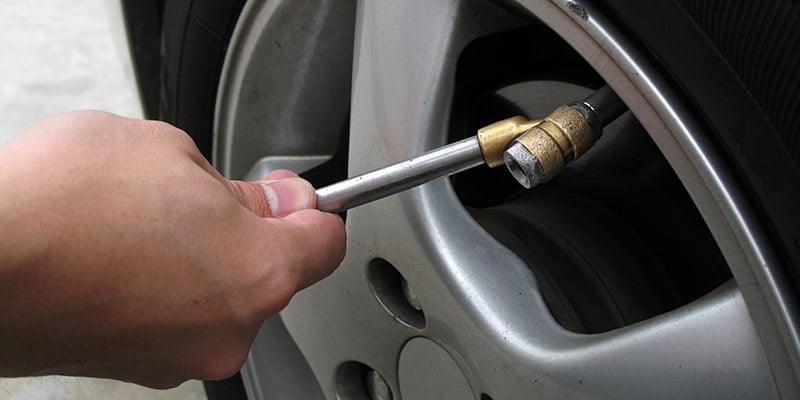
Don't just run your finger inside the splint, you'll cut your hand.
SourceOmar Kooheji
2012-11-19 00:50:07 +0000
You don't mention the type of bike you're talking about, but if you look at your wheels with the tube and tires off, you can probably see what the root cause is.
Bicycle wheels must have a rim tape or rim tape that protects the tube from the spoke hole in the rim. Of the two approaches, rim tape is the more modern. The rim tape may be rubber or plastic, or a slightly stretchable woven material (such as polyester fabric).
Generally, if you have an undamaged rim tape of the correct size for your wheel, it is very unlikely that your tube will be punctured by contact with the rack holes/spoke nipples. This can be cut with a hole where the valve stem goes through the rim, but if it is, then it should be obvious.
However, if you have rim tape, even if it is the correct width, it is possible that the rim tape does not stick to the rim in one or more places, and may move under the tube, thus exposing the spoke holes and causing the tubes to float.
The leak you describe - taking a few minutes to flatten out - suggests a small hole, and this does not conflict with the pipe being cut by the spokes, but usually such a cut is large enough to release the air almost instantly.
Check your leaky pipe to find out. Remove it from the wheel and pump some air into it. Where is the hole? If it's on the valve side of the tube - the part that comes into contact with the headband/cut tape/spoke holes - then that could be your problem. Hold the camera underwater if necessary to see where the bubbles appear.
If the hole is on the outside of the tube where the tube is in contact with the tire, the tire must be checked carefully. You might expect a bike shop to do it, but you never know. Run your fingers along the inside of the tire. As another respondent suggested, you can get a small hole from a piece of wire ("michelin spike") that pierced your tire shell, or a goat's head spike, or a piece of glass. You need to remove this hole from the tire shell or it will puncture every new tube you put in.
Zippy The Pinhead
2012-11-19 10:18:20 +0000
As well as the good advice of others, sometimes the valve leaks. This should appear on the water test.
I have this problem on one of my wheels but not on the other. At the moment I can get away with pumping once or twice a week.
SourceDanS
2016-01-14 03:06:51 +0000
Try another pump. I had the same problem and couldn't find the leak, replaced the tube and still had the same problem. In the end I tried another pump and no problem. The pump must have damaged the valve.
Source Chris
2012-11-19 13:22:35 +0000
One thing I've read is that if you ever drive with under-inflated or flat tires, it might give you a pinch of flatness.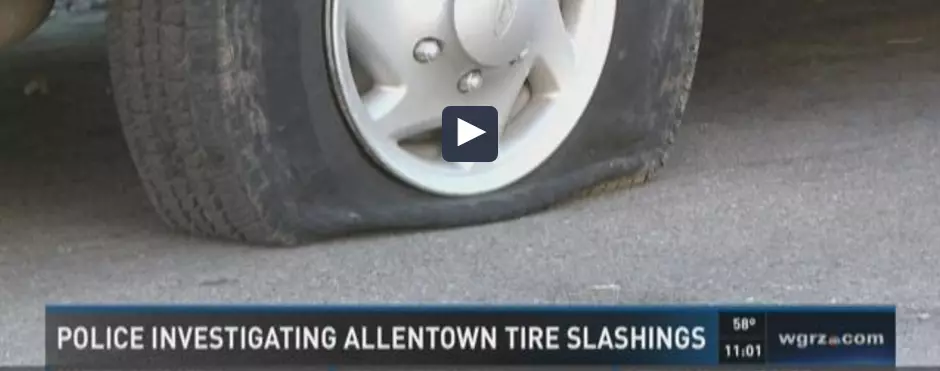
ChrisW
2016-02-07 06:40:19 +0000
Make sure the valve core is tight. You can buy a valve tool from your local auto parts store. If the valve core is tight, you have a hole if it falls out after a few minutes. Replace the tube and check the rim tape to make sure it covers all spoke ends. I prefer barbed rubber tubing. They last about 10 times longer between apartments and retain air longer. They are heavier and more expensive, but it's better than changing flats all the time.
Source Walt
2012-11-20 18:27:04 +0000
The most likely cause is poor valve quality, one of the options for built-in obsolescence. The idea is that you buy good things and you can live with it, or you buy cheap and suffer.
Can't get over the fact that modern marketing can be so manipulative that I've been running cheaper (department store bought) tires for years. Not fun.
Not fun.
Since switching to high quality touring tires a year or so ago, I find they stay firm for months at a time and I haven't gotten a puncture yet (this includes 4 weeks of cycling in the bumpy Extremadura in Spain ).
My wife uses similar tires (different brand) and claims to have cycled on the same tires for two years without a single puncture.
SourceThug
2014-08-05 00:45:58 +0000
I had the same problem and with the help of reading glasses I finally found a very small hole in my tire. Use super glue, JB Weld or similar to fill the hole in the tire.
Sourcecraig loddeke
Photo www.tgamobility.co.uk
It is not uncommon for tire pressure to decrease gradually over several days. You inflate them to the required level, but the tires again pass air over time. In this case, you should contact the tire shop, where they will determine the cause of the pressure loss. There may be several. We will look at the problems with tubeless tires, since most modern cars are equipped with them.
You inflate them to the required level, but the tires again pass air over time. In this case, you should contact the tire shop, where they will determine the cause of the pressure loss. There may be several. We will look at the problems with tubeless tires, since most modern cars are equipped with them.
Ivan Flyagin
Disk damage usually leads to its deformation. This comes from hitting the wheel at high speed on the edge of the pit or on a steep and hard bump. Due to the loose fit of the tire to the rim, a partial air leak occurs. Keep in mind that damage may be hidden on the inside of the rim, while the outside of the wheel will look brand new, without any visual flaws.
Another possible reason for the gradual loss of pressure in the tires is the depressurization of the spool (or nipple) as a result of mechanical stress, or the ingress of the smallest dust particles into it. If the mechanism is in good condition, then air can leak in the place where its valve is attached to the disk.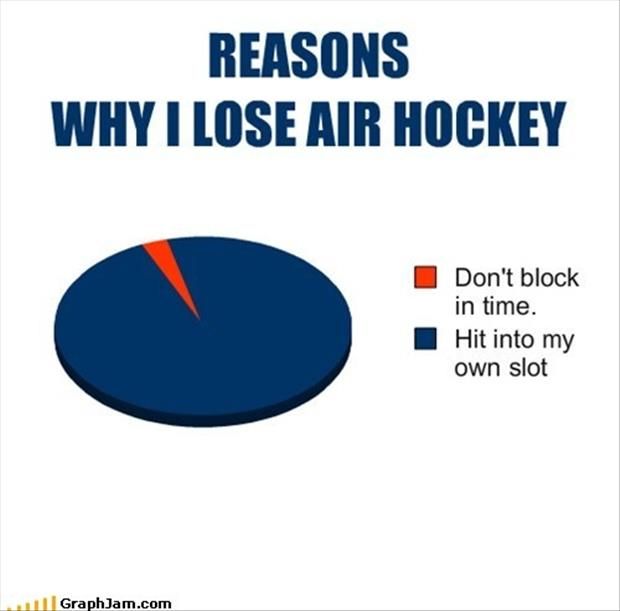 Sometimes you can fix the problem by pumping the spool with a few sharp and short presses.
Sometimes you can fix the problem by pumping the spool with a few sharp and short presses.
Quite often the tire “catches” a nail or other sharp and large object on the road, which safely gets stuck in the place of the puncture. In this case, it serves as a stopper, only not completely sealed, so the air will slowly but surely bleed. If a nail hits a tire with a camera, it instantly bursts, and at high speed this is fraught with an emergency.
A tire can be damaged not only on the tread side, where the thickest and most durable rubber layer is located. Its side is also vulnerable to contact with sharp objects. Usually in this place there are cuts from friction on curbs, the edge of the track, protruding rebar and other hard and sharp protrusions. How quickly the rubber will lose air depends on the depth of the scratch. Usually damage to the sidewall causes irreparable damage to the tire, and it has to be replaced.
No matter what advanced rubber compound is used in the manufacture of a modern tire, in any case, its structure will respond to temperature changes to one degree or another.